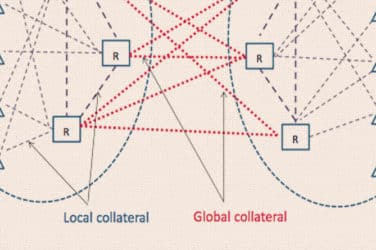
End users could be forced to enter into cleared swaps or exit market altogether.
The derivatives industry is striking back at proposed rules on margin requirements for uncleared swaps, saying it would pose a financial burden for many buy side participants who don’t have the option to engage in the cleared swaps market.
Without a clear-cut end user exemption from margin requirements for uncleared swaps, end users will be forced to enter into a clearable swap that requires daily margin, choose not to hedge at all, or find an offshore market that has less stringent margin requirements.
The Commodity Futures Trading Commission has proposed a rule under Dodd-Frank that would establish margin requirements for uncleared swaps for swap dealers and major swap participants that are not banks. Prudential banking regulators have proposed a similar rule that would apply to dealers and MSPs that are banks.
Under the proposed rules, both the CFTC and the prudential regulators would permit swap entities to use models approved by the applicable regulator in calculating the amount of initial variation margin required to be collected from their counterparties.
The margin requirements would only require the collection of margin by a swap entity from its counterparty, but not the posting of margin by a swap entity to its counterparties.
One of the more controversial issues has been margin requirements for non-financial end users, i.e., a counterparty that’s not a swap entity or a financial end user.
Both the CFTC and prudential regulators would require the models to cover 99% of price changes over a 10-day liquidation window, as opposed to the typical three to five day requirement used by swap clearinghouses.
Under the CFTC’s proposed rules, a nonbank swap entity would be required to have credit support arrangements in place with all of its counterparties.
A great majority of end users don’t have ISDA Credit Support Annexes (CSAs) in place today. In a poll conducted by Reval, 68% of end users don’t have any kind of collateral arrangement with their swap dealers.
For those that do have a CSA in place, the variation margin above the threshold is typically bilateral where either the swap dealer or the end user can post or collect collateral depending on the net position of the portfolio with respect to the threshold set in the CSA.
Therefore, all end users will incur costs for negotiating new or existing CSAs, the intent of which may be to have a high enough threshold that would never go into effect.
Even if the threshold is set high, it would be the fiduciary responsibility of the end user to ensure that it tracks the positions versus the various thresholds in the event it may need to post margin.
“We believe the proposed rules would penalize market participants for using uncleared swaps by imposing substantially higher margin requirements on uncleared swaps than on cleared swaps,” according to a comment letter by BlackRock.
“We are concerned that the swap markets that will remain as uncleared due to contrast such as liquidity and nonstandard terms that have yet to migrate to eligible cleared swaps will become uneconomical, taking away an essential hedging mechanism, according to BlackRock.
As of the end of June 2011, nearly $300 trillion of interest rate swaps are centrally cleared, according to ISDA. This represents well over 50 percent of the global interest rate swap market. Similarly, the volume of uncleared interest rate swaps has fallen from $201 trillion at the end of 2007 to $116 trillion at the end of 2010, the most recent date for which data is available. For both eligible interest rate and credit derivatives, over 90 percent of new transactions are currently being cleared.





